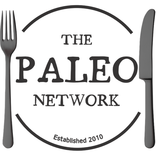No matter what type of food we eat, we can’t avoid Lectins as they are in absolutely everything we consume on a daily basis. Lectins are proteins which are found in animals, plants and our very own bodies and they have a number of functions which offer a means of protection to us. They can help to control the protein levels in humans but are also protective for plants as well. It is also thought that the right Lectins can also be beneficial in acting as a defense mechanism against serious illnesses, such as cancer.
Lectins can be useful for the body, but they can also be damaging, depending on the type of Lectin. There are many different types of Lectins found in different foods, so it is important to ensure we are taking in the right ones which offer the best benefits to our bodies. The function of Lectins also depend a lot of the individual and how sensitive their digestive system is as to how they will react to specific types of Lectins. The foods which contain particularly harmful Lectins include grains and legumes, which is why they are forbidden on the Paleo diet. These foods have the potential to destroy all of the good nutrients and vitamins in your body which makes you more susceptible to suffering from serious illnesses, such as heart disease and obesity.
If you consume the wrong Lectins and your body rejects these, it will also start rejecting all the good foods you eat, which means they will be of no benefit to you whatsoever. In order for the body to function effectively, it is essential that we absorb the right minerals and nutrients, which is why it is important to avoid legumes and grains on the Paleo diet. There are plenty of foods which contain Lectins which are good for our body and act as a way of protecting it, so it is important to be aware of the right foods to eat in order to get the most out of our bodies and feel as healthy as we can.

Gluten is one of the harmful Lectins that can cause a lot of problems with the digestive system, which is why many people who have particularly sensitive guts have to eat gluten-free foods. Gluten-free foods are becoming standard in supermarkets and restaurants these days, which shows how much of a problem gluten can be. Gluten is often found in wheat products including the high sugar and high fat foods we are advised to avoid as part of the Paleo diet. These harmful Lectins can attack the body and cause a lot of damage to the intenstine which results in a leaking gut, not to mention a lot of pain. Bad Lectins can completely destroy the immune system, leading to issues such as extreme weight loss, diarrohea and sickness. It can also cause more serious illnesses, such as diabetes.
There are ways of reducing the presence of bad Lectins in legumes and grains, including soaking and soaking them, but it won’t completely destroy them so it is much better to avoid them completely. The Paleo diet encourages the avoidance of these food groups for a reason; they are not good for the body.
Nuts and seeds also contain Lectins but again, they are only beneficial to the body if you eat these in moderation. There are many of us who can’t stop eating nuts when we start, so if this sounds like you, it is best to just avoid eating them. There are plenty of nutritious foods on the Paleo diet which will offer good Lectins as well as plenty of other important vitamins and nutrients which are essential for a healthy body.
Overall, Lectins won’t pose problems for most people, but there are a number of people who have particularly sensitive guts, which means the bad Lectins, such as those found in grains and legumes can end up causing issues with the digestive system. Sufferers of a sensitive gut are not always born with this; it can develop over a number of years and become a worse problem in later life. It is better to completely avoid these, which is why the Paleo diet is such a beneficial one to follow.
Do you avoid lectins, or prepare foods to minimise their effect?







